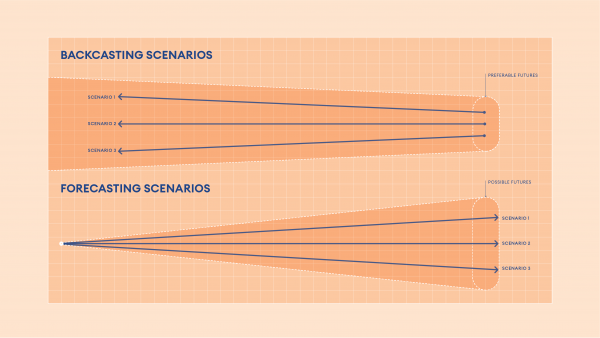Across private and public sectors, key industries such as food production, energy, transportation, communication and materials, all face a series of significant challenges. The sustainability gap is vast, as a result of what we call transformative failure. The solution is transformations that are not only economically viable but also consider…
Across private and public sectors, key industries such as food production, energy, transportation, communication and materials, all face a series of significant challenges. The sustainability gap is vast, as a result of what we call transformative failure.
The solution is transformations that are not only economically viable but also consider and attend to ecological and social needs. This calls for systemic change; we must move from our current paradigm to the next era. We appreciate that business as usual is hard enough as it is, and introducing new business models, new competencies and new forms of collaboration can seem almost impossible. But it is possible and necessary.
This is why Halogen, Demos Helsinki, and Future fit Leadership Academy created a step-by-step approach to systemic transformation and ecosystem innovation. Together, we developed a Playbook for Systemic Innovation – Mindsets and Methods for Transformation. The playbook covers aspects such as:
- regenerative mindsets
- systemic mapping
- foresight
- systemic leadership
- orchestration of ecosystems
- design-driven innovation
- portfolio management
These are all accompanied by real-life examples and business cases.
This post presents a brief Q&A about why we need to work with futures and how foresight can help bring about needed transformation.
Why do we need to work with normative futures to achieve systemic innovation that leads to transformation?
To provide a short answer: We have a natural tendency to focus on what seems to be probable in the future. But now the future that seems to be the most probable — resulting from long-term historical trends — is extremely undesirable, even morally unacceptable. This is what we know from the IPCC reports and research on planetary boundaries.
So we need to transform many systems and practices now in place in our societies. That also means that all companies, cities, and other organizations have to build their strategies for a 1.5 degree world. It is not a simple task, as we can see when witnessing all the political and economic tensions and polarization in our contemporary societies. We are not by nature good at identifying things we want in the future, especially when thinking about long-term futures and complex issues like entire societies.
Imagining, discussing, and sharing views on desirable futures beyond the transformation require time, tools, and skills. What tools do we have to understand the different approaches to the future?
A model like three future horizons demonstrates that we should have various approaches to the future: understanding where we come from, what is necessary for the future and what are the novelties needed to get there.

We also use a tool called backcasting scenarios. Backcasting scenarios are pathways imagined and constructed from an acceptable/desirable future — a reality in a possible world in which the transformation to regenerative systems has happened — to the present day. These normative scenarios help in understanding what kind of future we want. That tends to be a collective process; we need to understand different aspects and characteristics of the future. That is where co-creation is crucial. This is especially true when thinking of transformative futures.

How does foresight help to deal with uncertainties? How is it different from planning?
Transformations are — eventually — gradual processes, they involve several steps. Yet those steps cannot be merely planned. The world is full of uncertainties that might interfere with our plans. Also, we seldom possess such powers that we could guide and drive transformative change by ourselves, through powers of one organization or even one government.
Foresight and especially backcasting scenarios are all about expanding the domain of possible solutions for transformative change. In other words, building our collective capabilities in shifting the course of development. That means a more systemic view on our context: noticing things and actors both boosting and inhibiting change we want to see, ways of harnessing synergies between things pushing to the same direction, and ways of by-passing items obstructing desired direction, right timings, and sequences of actions.
In this process, we’ve drafted foresight tools for transformative systemic innovations. But, as we know, tools often don’t get used if no one has ownership of them or the process they are used in. How can we build ownership in this process to enable the transformations?
Good foresight increases the diversity of view we have on the future. To reach that, co-creation is absolutely key.
Organizations and systems consist of people with differing perspectives on issues – due to their differing tasks, professions, and education. Through co-creation, we can re-define challenges we face – so that everyone can understand why they matter.
Co-creation also enables everyone to contribute to creating solutions with the best expertise they have – hence resulting in better overall solutions.
Also, the fact that people spend time together thinking of future solutions can build shared ownership and commitment towards systemic, transformative change: it helps people to find a shared focus and ways of improving capabilities necessary to the change.
Read more in the Playbook for Systemic Innovation – Mindsets and Methods for Transformation here.
Feature Image: Skye Studios / Unsplash

Foresight enables to prepare for crises but also look beyond them
Post
April 2, 2020
What is the role of business when the rest of the world is changing?
Post
November 14, 2022
Skopegy: Strategy in the 21st century
Publication
October 18, 2022